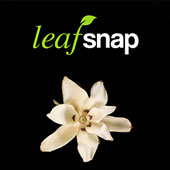Ms. A's Review of App- “Leaf Snap”
Leaf Snap is a free app that is
available for the iPhone or iPad. This app is an “electronic field guide” used
to aid in the identification of flowers and trees. This app is a collaboration
of data compiled by Columbia University, the University of Maryland and the
Smithsonian Institution. “Leaf Snap contains beautiful
high-resolution images of leaves, flowers, fruit, petiole, seeds, and bark.”
The target audience for this app is
anyone learning about plants or trees.
The purpose of this software is to
aid in the identification of trees and plants while in the field, eliminating
the need for a paperback guidebook. The
app makes plant identification easier than with just a traditional guidebook, since
students are able to “snap” a picture of any leaf and Leaf Snap will identify
it using its “visual recognition software.”
The Leaf Snap app is very easy to
use and navigate. It is pretty self explanatory
and straight forward. I have also used
this app without using the camera feature to identify plants, and it was still
helpful as a comprehensive field guide.
This app works on the iPhone and
iPad. It is free to install and does not
require more memory than the average app.
The strengths of this app are that it
allows students to identify plants in the field by simply “snapping” a picture
of a plant or tree they are trying to identify.
This is a very useful feature, since many plants are often identified
erroneously in the field.
Weaknesses are that the student
needs an iPhone or iPad to use the app. Another
weakness is that the app’s plant database is currently limited to species found
in the Northeastern region of the United States. The creators are trying to
expand the database to include species across the entire United States.
I would use this guide perhaps on a
field trip with my students as a tool to get them interested in plant
biology.
This app is useful in
helping students memorize scientific vs. common names of various plant species; it can be used to aid in studying in
place of flashcards.
This app is also useful as a way to
keep track of previously identified plants and to keep a “life list” of plants
seen.
.
Science teachers should use this app
as a way to get students interested in learning plant biology. Students will like exploring new plants by
taking pictures with their cell phones or iPad.
This app is a great way to incorporate technology on field trips!





